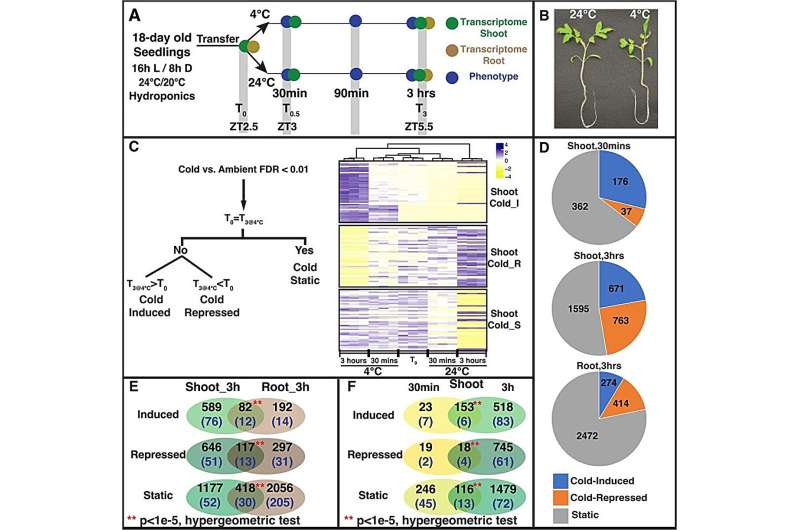Unlocking the secrets of cold tolerance: A dive into tomato plants' molecular responses to chilling stress

Cold sensitivity poses a significant challenge for certain essential crops. While there's an indication that these plants may possess cold acclimation capabilities, the molecular dynamics, particularly involving the CRT binding factor (CBF) family, are not fully explored.
One primary concern has been the disparity in cold tolerance between temperate plants and tropical species such as the tomato. Additionally, the accumulation of small metabolites, termed cryoprotectants, plays a crucial role in enabling plants to resist damage from low temperatures.
Adding to the complexity is the plant's circadian clock, which potentially intertwines with the cold response mechanism. As the world faces unpredictable weather patterns due to climate change, understanding these intricate processes becomes paramount to safeguarding crop health.
In July 2023, Horticulture Research published a research paper entitled by "Chilling stress drives organ-specific transcriptional cascades and dampens diurnal oscillation in tomato."
First, researchers exposed 18-day-old tomato seedlings to 4°C cold stress at ZT2.5 (ZT = time of onset of light) and conducted phenotype analysis at 30 minutes, 90 minutes, and three hours. The stem transcriptome was sampled at 30 minutes and three hours after treatment, while the root was only sampled at three hours.
The results indicate that when tomato seedlings are exposed to low temperatures, there is extensive transcriptional reprogramming in both buds and roots. Further research found that the expression of CCA1 gene was more affected by temperature than by light incidence. The mRNA levels of genes that catalyze the biosynthesis of trehalose, raffinose, and polyamines in cold-treated plants increased by an average of 10 times, indicating an increase in the accumulation of these cryoprotectants in response to cold stress.
To identify functional enrichment among the cold-responsive differentially expressed genes (DEGs), Kyoto Encyclopedia of Genes and Genomes (KEGG) pathway enrichment analysis was performed.
Analysis showed that many genes involved in photosynthesis, hormone signaling, etc. are induced by cold stress. Under cold stress, the most significantly affected process/pathway in tomato plant branches is the photosynthesis pathway. In the cold-treated samples, the operational efficiency of photosynthesis (PSII) began to increase, but as the cold treatment continued, despite the continuous upregulation of photosynthetic related genes, PSII still decreased.
The significant upregulation of most photosystem genes failed to compensate for the net loss of photosynthetic efficiency caused by low temperature stress. The observed amplitude loss of core clock genes during cold stress likely disrupts their rhythmic regulation. Additionally, using a CBF3 knock-out mutant, the study revealed that CBF3 is not essential for the induction of certain cryoprotectant biosynthesis genes under cold stress in tomato.
In summary, this study offers a comprehensive view of the complex transcriptional landscape of tomato seedlings under cold stress, highlighting both unique characteristics of tomato and shared mechanisms across plant species. The intertwining of cold response and circadian regulation underscores the multifaceted nature of plant responses to environmental stressors.
More information: Tina Agarwal et al, Chilling stress drives organ-specific transcriptional cascades and dampens diurnal oscillation in tomato, Horticulture Research (2023). DOI: 10.1093/hr/uhad137
Journal information: Horticulture Research
Provided by NanJing Agricultural University Study finds linkage between DNA methylome and RNA transcriptome in Fe deficiency in tomato roots
No comments:
Post a Comment